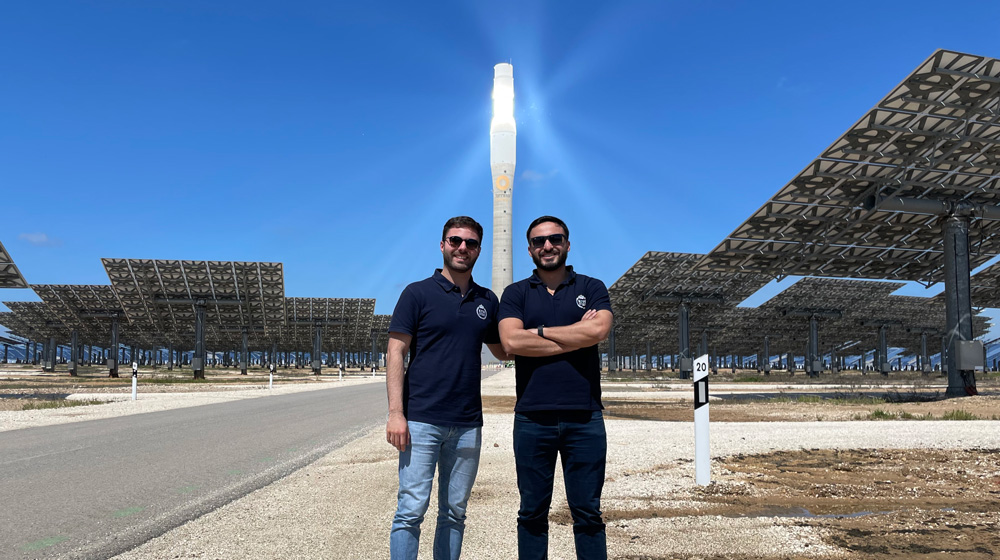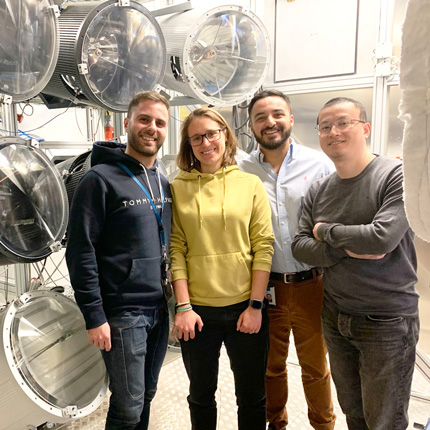KTH improves power generation
Next generation turbines: powered by sun and hot CO2

Many of today's power plants are powered by turbines run by steam. In recent years, turbines driven by a special form of CO2 show exciting potential. There is still research needed to make the technology more commercially viable. And KTH is at the forefront.
It’s no news: we’re experiencing a shortage of energy and the energy price is the talk of the town. On top of that we want to make energy sustainable and affordable – just like the sustainable development goals indicate. And there are those working on it.
Traditional power plants often generate electricity from steam turbines. But if we replace steam with CO2 we get a whole new ballgame. If you keep CO2 very hot and under extremely high pressure, in a state between gas and liquid called supercritical carbon dioxide (sCO2), the CO2 offer higher power density and cycle efficiency.
“What you get is a more efficient turbine, small enough to fit on a desk. That saves space and material. A steam turbine needs to be large to become cost efficient. With sCO2 we enable smaller power units that are still efficient and have a potential for new applications” says Rafael Guédez researcher at the Department of Energy Technology who is deeply involved in the next generation turbines.
A plant in Portugal
Exploring the use of CO2 in power systems is nothing new. But the use of CO2 under supercritical conditions has still not reached commercial use and is being explored by scientists globally. A large sCO2 turbine plant in megawatt scale is being built in the US, but it lacks something that KTH is about to add: solar power.
KTH and its project partners are building an industrial-scale solar power driven sCO2 cycle in Portugal – the very first in its kind. At 2025 the system is expected to be operating.
“It’s the first one in Europe of a megawatt scale – a relevant size,” Rafael explains.
“At KTH we want to understand how all these systems should be designed to be more techno-economically viable. We want to find the best combinations of solar and storage technologies: We try out new methods to capture solar energy and deliver it on demand. We also look for sustainable methods for how to store the heat, for example in different recycled materials.”

Rafael Guédez’ teams are involved in three projects focusing on the different aspects.
What is the best way to capture energy from the sun? Well, it depends on the location. In places where the direct radiation is good, like in the south of Europe, it makes sense to use mirrors redirecting the energy to a tower, for instance. In other parts solar panels are preferred.
New ways to store heat
When you capture the sun’s heat you want to keep it hot, store the heat to be used when you need it. There are different methods to do this. A common one is to let a fluid of molten salts transfer and store it.
“We also try to find even more affordable and environmentally friendly ways to store heat, like use recycled materials, rocks, metal wool or air.”
At the Department of Energy Technology the team is building models and simulation tools so the users and the industry can understand how these systems work under different conditions.
”It’s exciting to work with so many different industries and universities, supported by EU. And we are in the forefront here, you can be sure: everything that is connected to solar and sCO2 – KTH is there.”
Text: Anna Gullers
